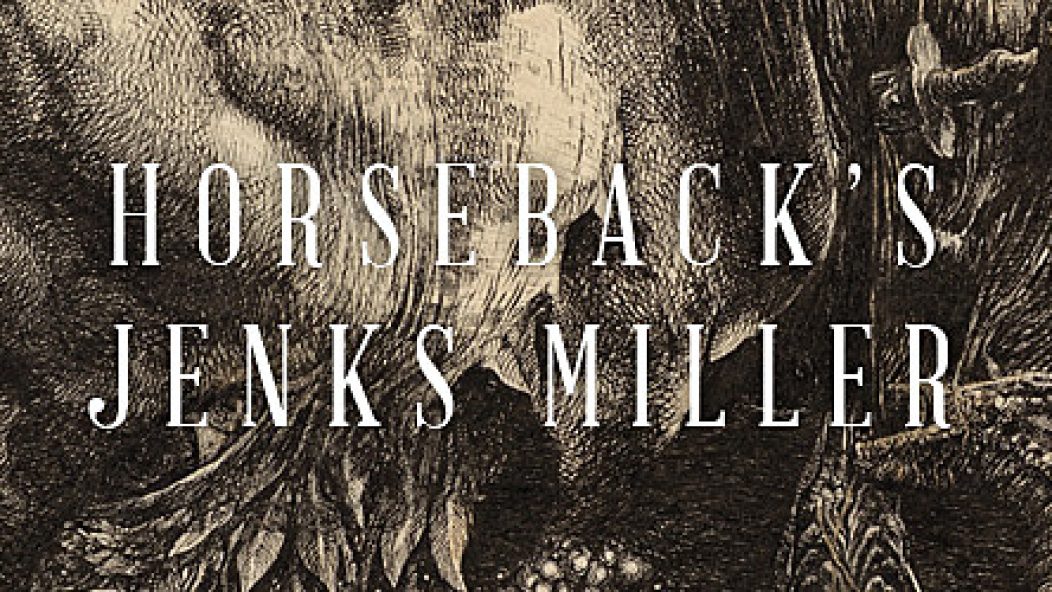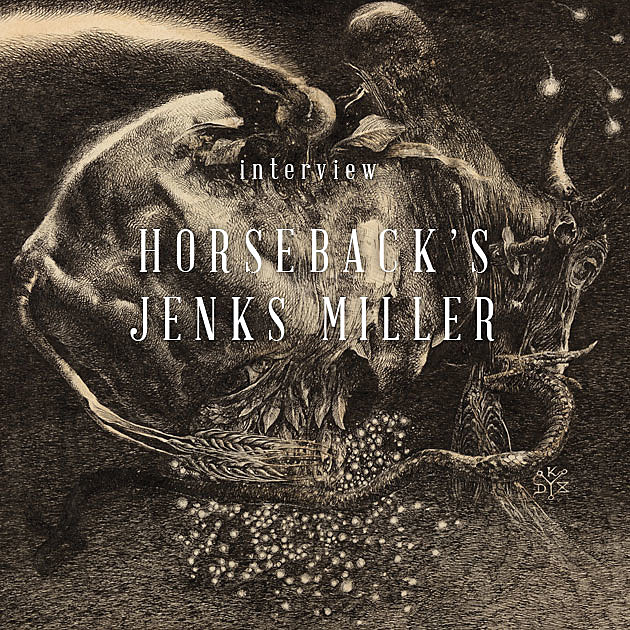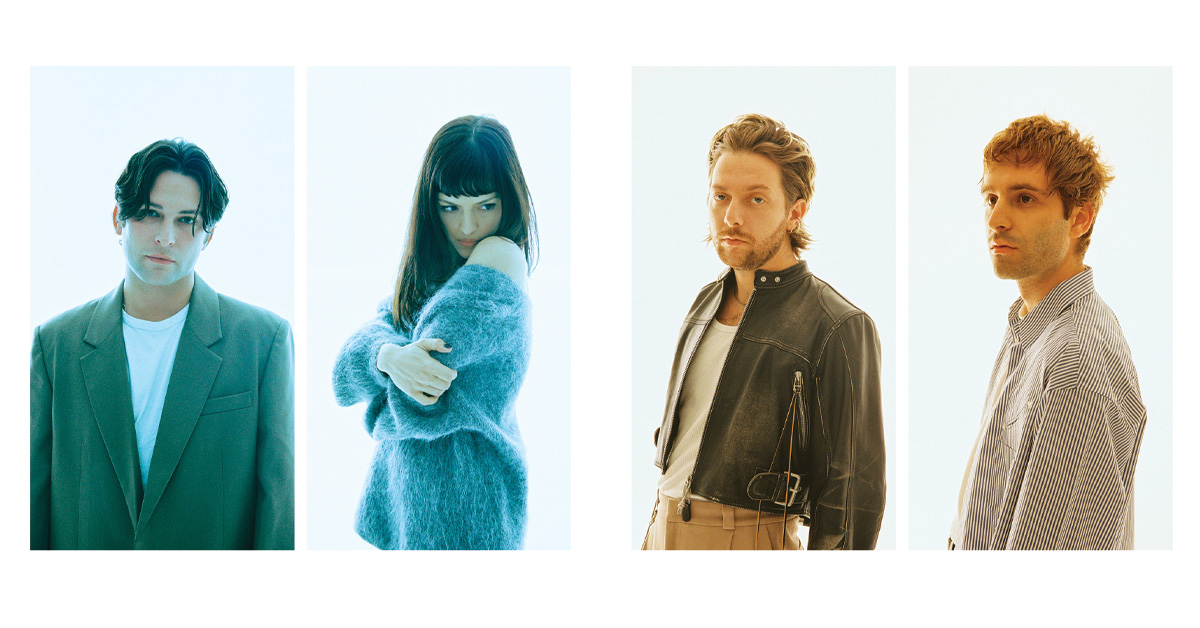
Interview: Horseback's Jenks Miller
. . .
“Quod est inferius est sicut quod est superius, et quod est superius est sicut quod est inferius, ad perpetranda miracula rei unius.” (“That which is below is like that which is above, that which is above is like that which is below, to do the miracles of one only thing.”) – the Emerald Tablet of Hermes Trismegistus, original Latin and translation by Sir Isaac Newton
. . .
To the Greeks, Hermes Trismegistus (“thrice-greatest”) was the bad-ass mash-up of the Greek god Hermes and the Egyptian god Thoth. Hermes was the messenger between the gods and humans, the bearer of all sorts of news. Ibis-headed Thoth had the minor task of maintaining the universe, and was also credited with developing magic, writing, and science. In his spare time, he judged the dead.
One of Hermes Trismegistus’ greatest feats was authoring The Emerald Tablet, an inscrutably layered text that allegedly revealed the secrets of alchemy. Back in the day, everyone wanted to be able to turn random stuff into gold. Actually, in the era of Occupy vs. the 1%, that hasn’t changed much. Everyone’s still looking for alchemy—a taste of the literal shiny stuff, or a chance to transform themselves into someone better than the schlub they currently feel like.
In The Hero with a Thousand Faces, Joseph Campbell wrote about that struggle—and about how myths can show us the way. It’s the Fool making his way through the major arcana of the Tarot. It’s Luke Skywalker facing down the Dark Side. “A hero ventures forth from the world of common day into a region of supernatural wonder: fabulous forces are there encountered and a decisive victory is won: the hero comes back from this mysterious adventure with the power to bestow boons on his fellow man,” Campbell wrote.
Horseback’s new album, Half Blood, drops May 8. It’s the band’s first album of new music on Relapse Records, after the label picked them up in 2010 and re-released The Invisible Mountain. (A new 7″ EP, On The Eclipse, emerged in April on Relapse PR man Bob Lugowe’s label, Brutal Panda.)
The album opens with the rocking “Mithras”; its opening lines warn, “listen—change will come”. Half Blood offers a mixture of the textured, minimalist soundscapes Horseback fans know well and the more structured, southern-rock infused missives glimpsed on The Invisible Mountain. The second half of the record is a hallucinogenic suite dedicated to Hermes Trismegistus, closing with “The Emerald Tablet”, perhaps Horseback’s most celebratory, uplifting song to date.
Horseback founder Jenks Miller intended Half Blood to be a companion to Mountain, and in some ways it is, but his muse wandered to some new places. Both albums are journeys, but Half Blood is a hero’s journey in the Campbell sense; a journey of transformation.
. . .
Let’s just get this out of the way: Half Blood has nothing to do with Harry Potter, right?
Right.
Many of the songs on Half Blood have more traditional structures than your prior work. There’s more defined rhythm, more vocals, lyrics you can sometimes make out, and even a little clean singing/chanting. Did you consciously move in that direction?
The original plan was to make a sister record for The Invisible Mountain, with rock-band arrangements and cyclical riffing. As usual, when I got to the recording and editing stages, the sounds exerted themselves, suggesting new approaches that wanted to be explored. As a result, a few of the songs on this record have traditional structures while others are more abstract.
At some point I do have to make a conscious decision about direction. But I try to put that decision off as long as I can, until the things I’ve recorded reveal their own unique characteristics. Sometimes this means I sit on a track for a long time, manipulating aspects of the recording until the composition comes to life.
Like the details of any creative process, this is hard to put into words. Maybe an example can help me: I began work on the track “Inheritance” by playing percussive patterns on metal bells fixed to a structure in a park not far from home. I recorded the bells while out on a walk with my family, then came home and added layers of electronics (processed guitars, heavily distorted vocals and so forth) to further emphasize the bells’ otherworldly quality. When all this was done, the composition sounded very harsh and alien; it wanted a resolution that would bring it all back down to earth, so later I recorded a final section with more traditional instrumentation (including a looped drum beat and slide guitar). This allowed for movement within the composition, from more abrasive textures to more familiar ones.
When I started recording “Inheritance”, I didn’t know it would end up where it did—decisions about its direction were made in stages along the way. The more straightforward tracks evolved in a similar manner, but with a foundational guitar or bass riff rather than a field recording. So yes, there is a conscious method to all this, but the direction is not entirely planned out before I start recording.
The opening tracks of the album are named for the rival Zoroastrian gods Mithras and Ahriman. Mithraism was a competitor to Christianity in the very early days, but ultimately lost the popularity contest. Were you raised with Christianity? What’s your connection to the Mithras and Ahriman stories?
I wasn’t raised in a particularly religious family. Aside from the standard fairytales and myths I heard as a kid, a college course in comparative mythology was very formative. This course put me in touch with mythological systems lost to conventional western theology, as well as a cadre of thinkers (including C.G. Jung and Joseph Campbell) whose work exhibits a synthesis of archetypal forms.
When I was discussing the thematic elements of Half Blood with Denis Kostromitin, an artist who frequently collaborates with Horseback, he suggested the Mithraic Mysteries might provide an appropriate symbol set. Once adapted, the story of Mithras proved a useful platform upon which to stage the record’s own symbolic drama.
Denis Kostromitin’s cover art for Half Blood is a re-imagination of the famous scene where Mithras (or Ahriman; there’s some debate) kills a bull. What was the process for developing the album art? Was there something about this mythic scene that spoke to you?
Once a record is underway, I like to give it a narrative angle so that I can measure its progress. Denis’ suggestion of using the tauroctony for the cover helped condense this particular record’s narrative into an expedient symbolic language. Its larger themes, hybridity, adaptation, evolution and so forth, are advanced by a series of mythical characters made to represent different aspects of alchemical transformation—Mithras as sacrifice, Ahriman as destruction, Arjuna as fulfillment. Denis and I ultimately agreed that it would be best to leave Mithras himself out of the cover image; here, the duality embodied by the slayer and the slayed is collapsed into a single unit.
Denis has written an article on his own process behind the cover image, so I won’t go into more explicit detail for fear of encroaching upon his territory. I would recommend visiting his website, denisforkas.com.
Another song on the album refers to Arjuna, a Hindu master warrior-archer, and you have a whole suite devoted to Hermes Trismegistus and his Emerald Tablet, which supposedly revealed the secrets of alchemy. Have you followed mythology for a long time, and how did these myths make their way into your music?
Yes, comparative mythology remains one of my major interests. I appreciate art and music that’s been imbued with mythological significance, and I tend to gravitate toward that sort of thing in my own work.
Was there something going on at the time you were making Half Blood that made the themes of sacrifice, destruction, transformation, and fulfillment appealing? Or were they part of something specific you wanted to communicate to the listener?
Lately I’ve been reading up on Hermeticism and western mystical traditions. The idea of alchemical transformation—at least, when applied in a figurative sense to personal growth—seemed to jive with the original idea behind the record, which was to complete the actualizing/mythic journey of The Invisible Mountain. In Hero with a Thousand Faces, Campbell talks about the final stages of this journey in terms of a dissolution of the ego. I imagine this as a splintering process in the psyche, after which otherwise competing archetypes are allowed to co-exist. After breaking down the ego’s artificially pure constructs, we are able to effect an empowering sort of transformation. Alchemy starts to make a lot of sense to me in this context.
You released a 7″ on Brutal Panda called On the Eclipse, just a month or so before Half Blood. Is there a relationship between the two releases?
There’s no overt relationship here. Ideally, there would be some time between releases. Unfortunately, scheduling challenges can make a more deliberate pace impossible.
These were songs that hadn’t found a home on other releases. Most of the EPs collect sounds and compositional approaches I’ve experimented with on the way to recording full-length records. Sometimes the EPs have larger thematic significance, too: MILH IHVH is based on the notaricon for MI IOLH LNV HshMILH, which in The Kabbalah linked circumcision with an ascent into heaven (but here is instead employed as another metaphor for ego-destruction). On the Eclipse is organized around the Hermetic maxim, “As above, so below.”
You grew up in Raleigh, North Carolina. How did growing up in the South—albeit a fairly urban part of the South—affect your relationship to music? Was southern music a part of your early life?
The South has affected me immeasurably. To live in the South is to experience its confluence of cultures, its musical heritage, its fraught political history. The first dozen concerts I attended as a child were bluegrass and old-time shows organized by the Piedmont Council of Traditional Music (Raleigh’s “Pinecone”). As an adolescent I associated traditional southern music with backwards politics, but in my adult life I’ve found my way around those stereotypes.
You discovered English goth-rock band Fields of the Nephilim early on and cite them as a major influence, and you have been a black-metal fan for ages. Are there other bands or sounds that have shaped your approach to music that might surprise people?
I can’t imagine there are many surprises in the Internet age. Here’s a list of influences, signposts really: Sabbath, Lungfish, John and Alice Coltrane, Swans, Tony Conrad, Neil Young, Junior Kimbrough, Kate Bush, Skullflower, Neu, and scores of metal bands.
Horseback’s music is intensely layered. There’s so much in it, which makes it a pleasure to listen to over and over. And yet, it’s so meditative that you kind of zone out and miss the details. Is that intentional? What’s your process for building these songs?
You’ve hit the nail on the head here: I’m shooting for a meditative quality that’s also rich enough to command more focused attention. Brian Eno’s stated definition of “ambient music” is apropos, as is David Lynch’s insistence on unconscious (or at least associative/surrealist) expression in contemporary art.
Horseback combines many seemingly disparate elements, particularly a dark Americana guitar sound, the meditative drones of Indian classical music, and the harsh vocals of black metal. What relationship do you see between these elements?
All these elements share a certain sonic texture. The amelodic abstraction characteristic of most harsh vocal performances isn’t so far removed from the abstraction found in other kinds of textural music, from quiet, droning vibrations to dissonant industrial clanging.
There’s also a useful tension created when seemingly unrelated elements appear close together. (This may also be the lingering influence of surrealism: “These elements are related because they’re on the same canvas.”) I suppose the challenge is to have this tension serve the larger piece in a meaningful way; as a compositional tool, its effect can be destabilizing, surprising, catalytic, fantastic, etc., etc.
What are the challenges involved in translating such complex music for a live audience?
The challenges here are numerous and would test the limits of even the most generous budget. We don’t try to recreate the sound of the records in live performance. Instead, we invoke the raw, hypnosis-via-high-volume approach favored by rock bands since the invention of the electric guitar. I believe that—despite the technological advances of past decades—live rock music is best served in the undercooked and oversexed manner of The Stooges.
. . .
HEAR HALF BLOOD
. . .
Horseback – “Ahriman”
. . .
BUY HALF BLOOD
Preorder for release on May 8
Relapse (CD)
Relapse (LP, brown)
Relapse (LP, black)
. . .











